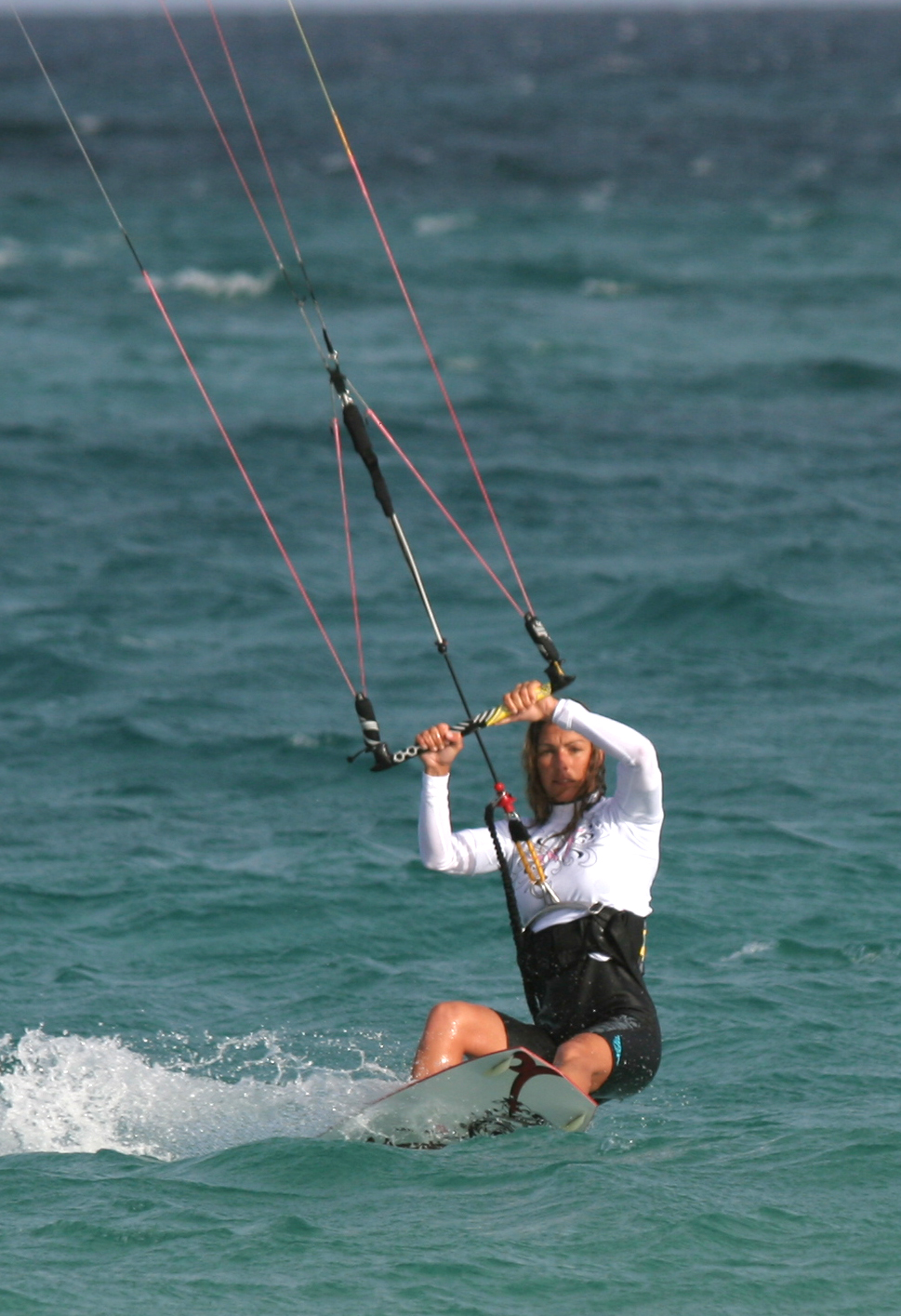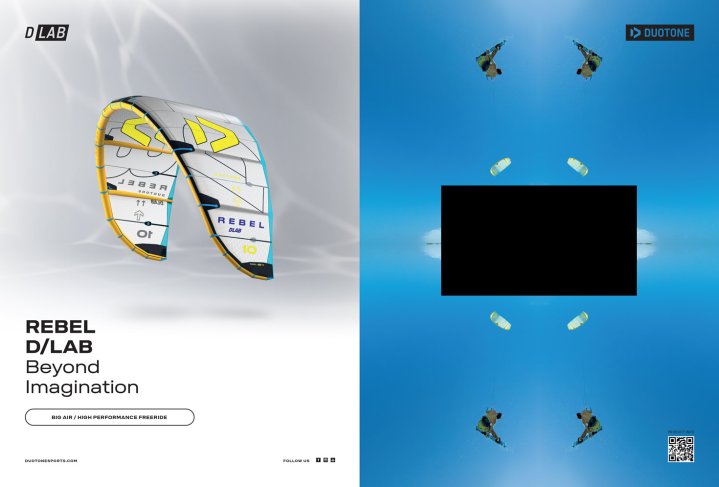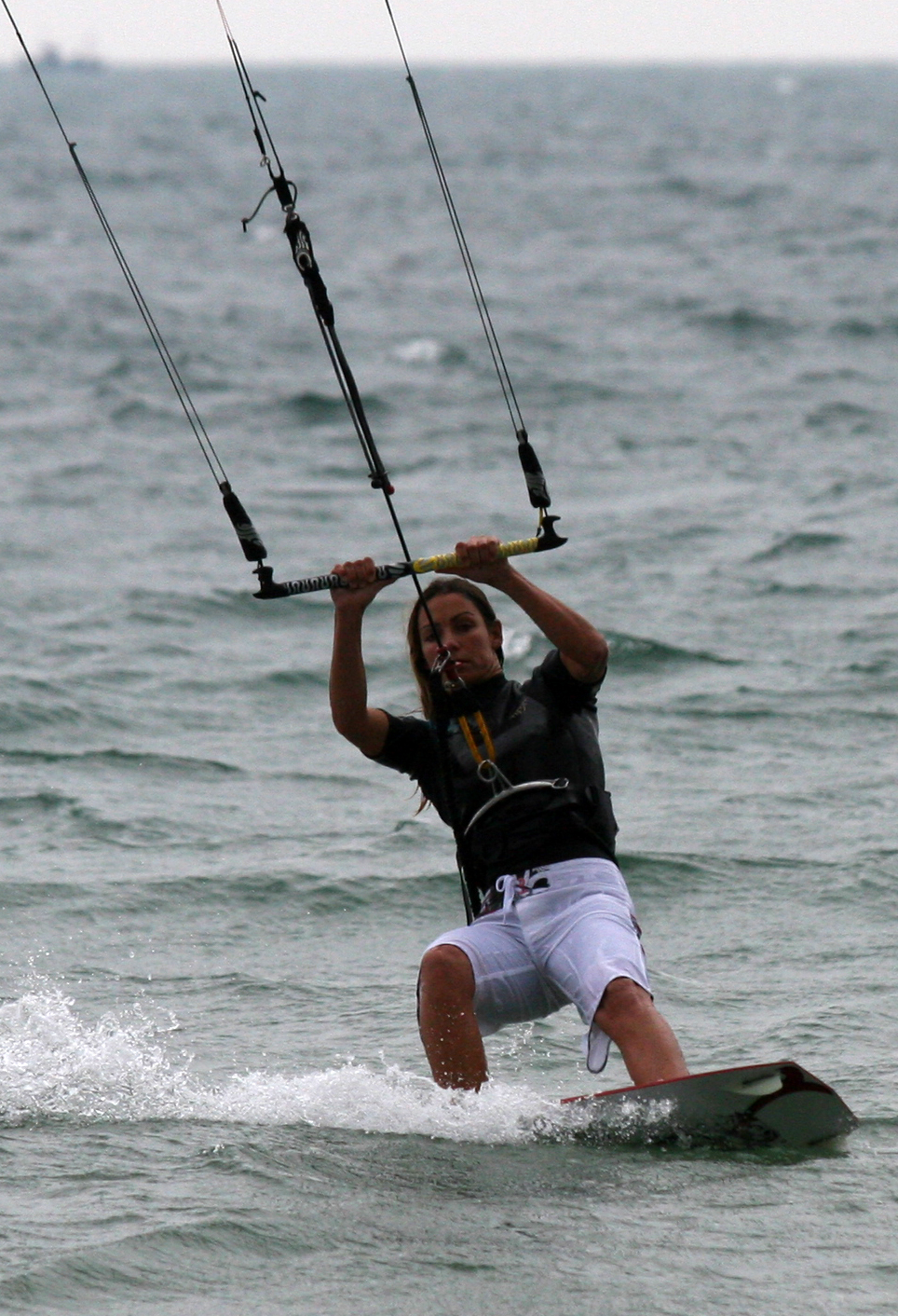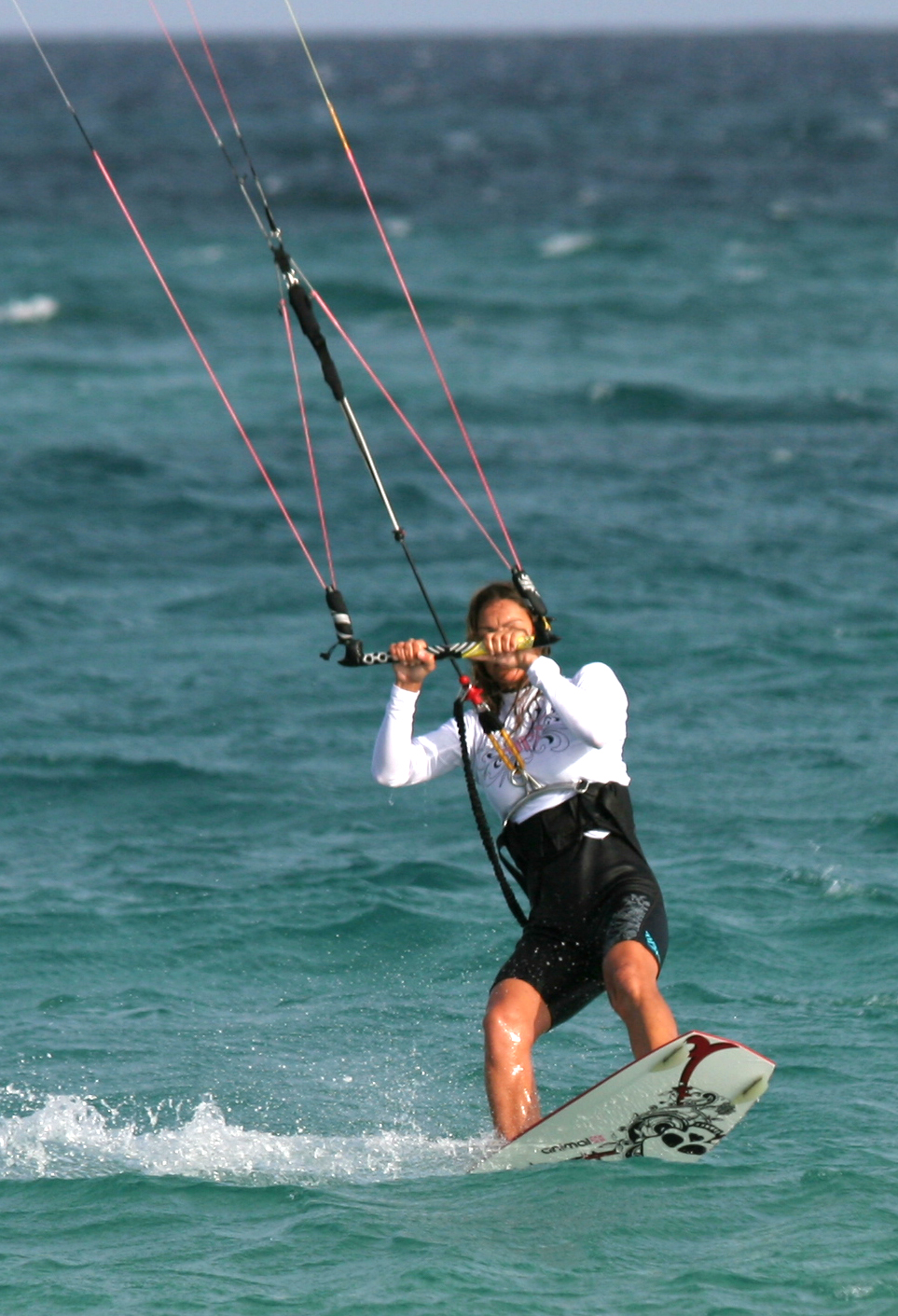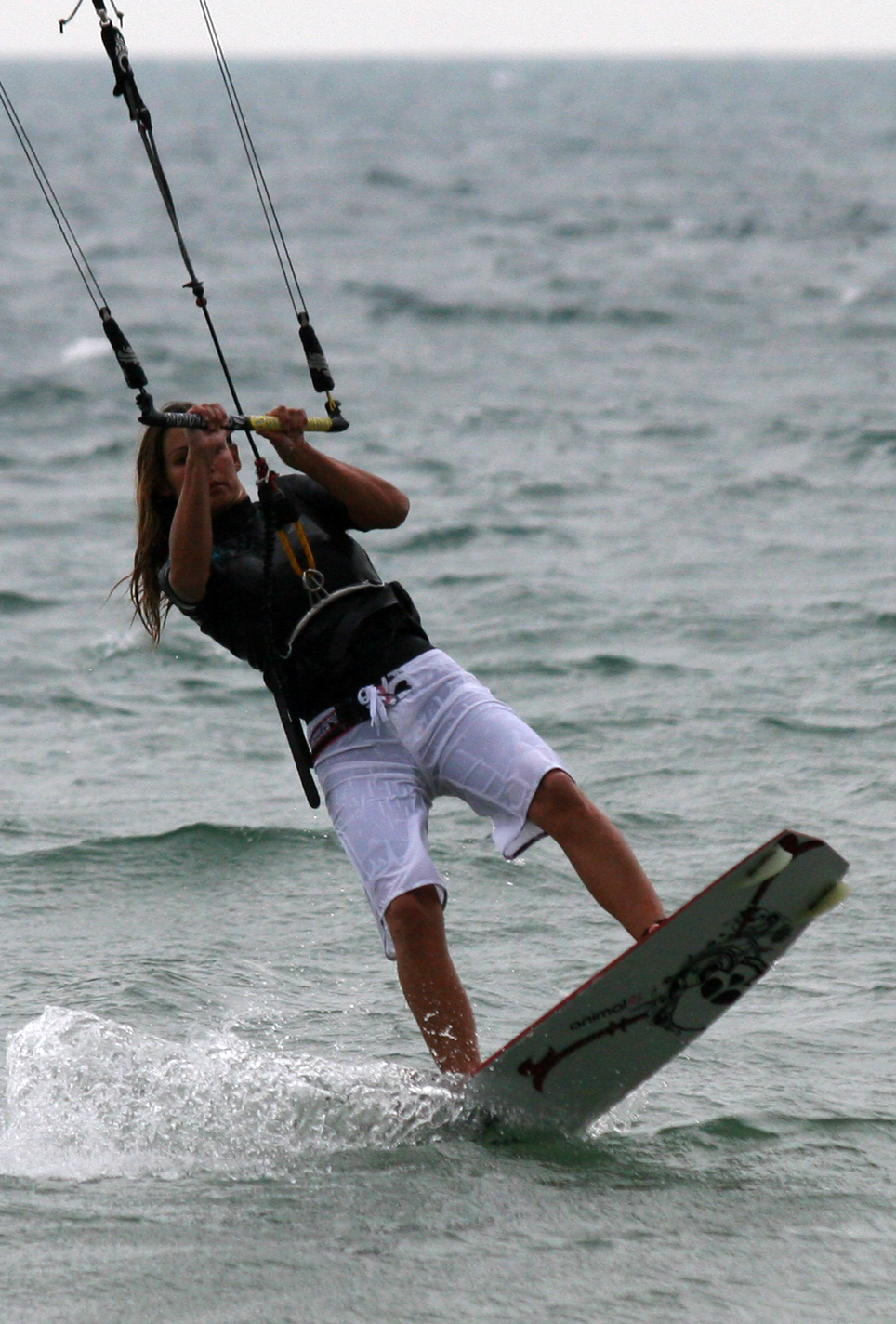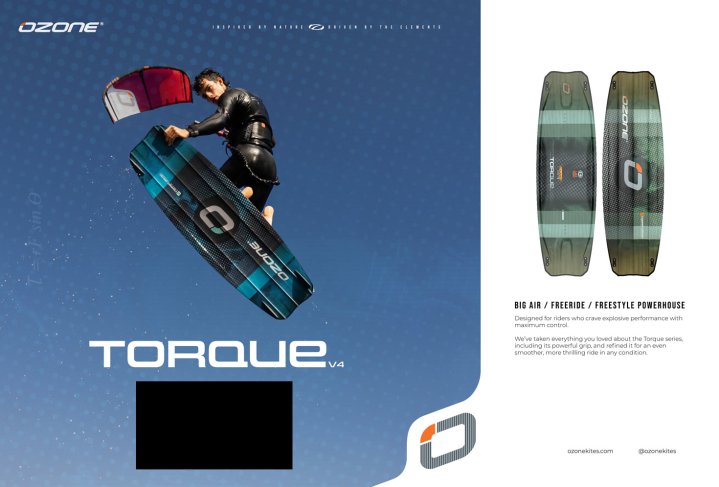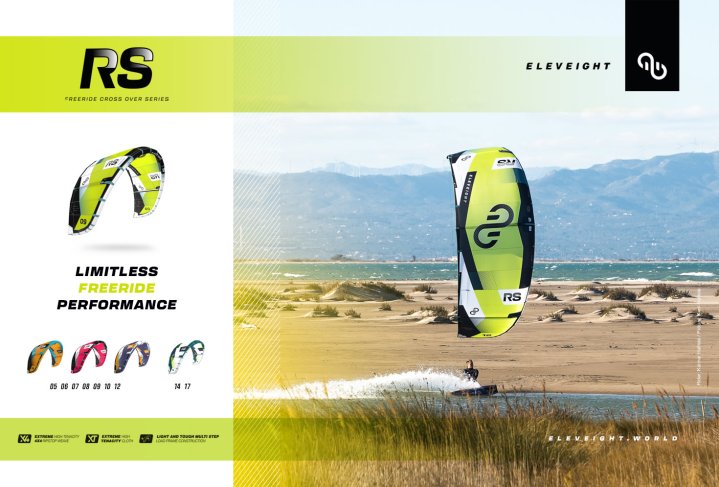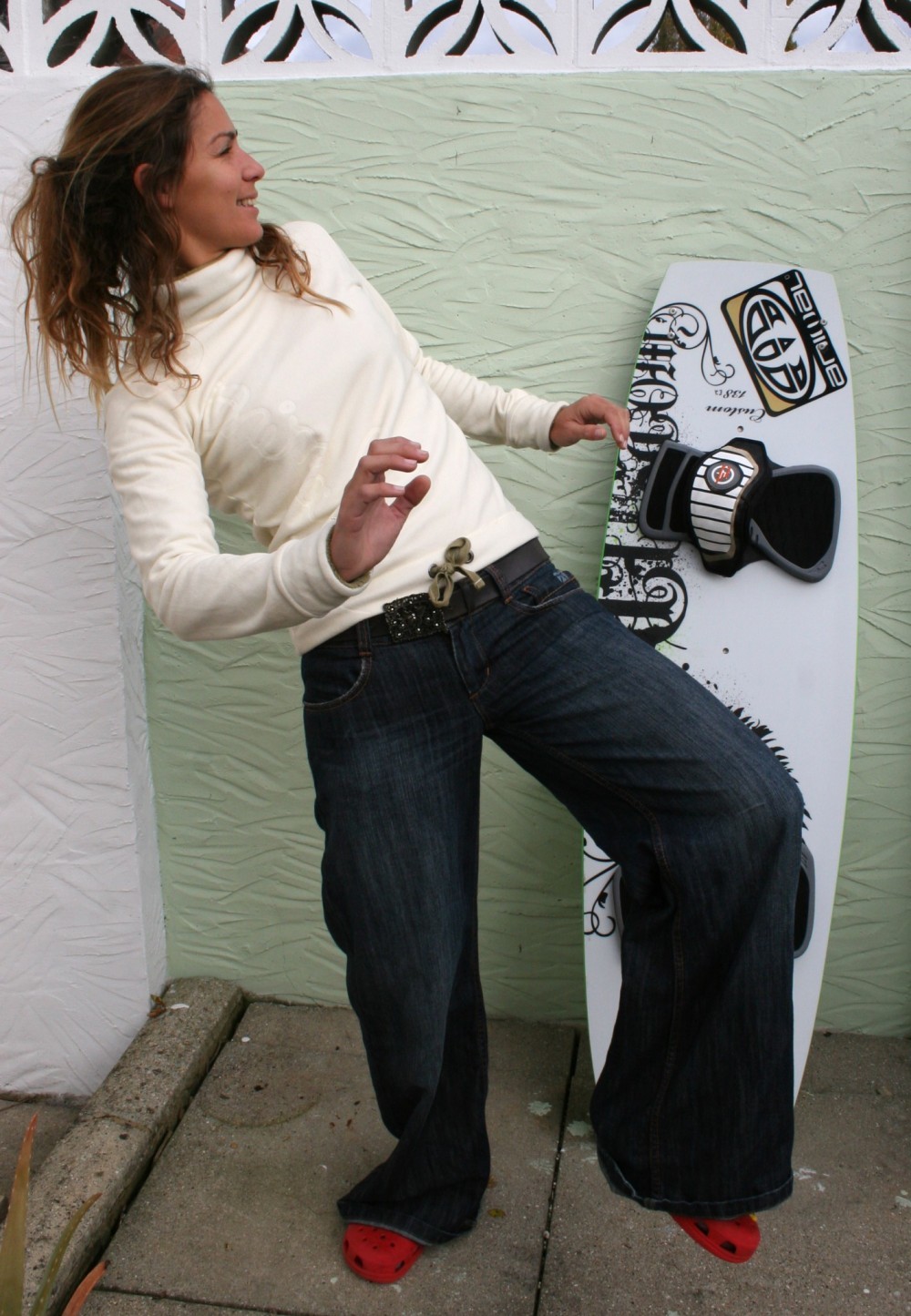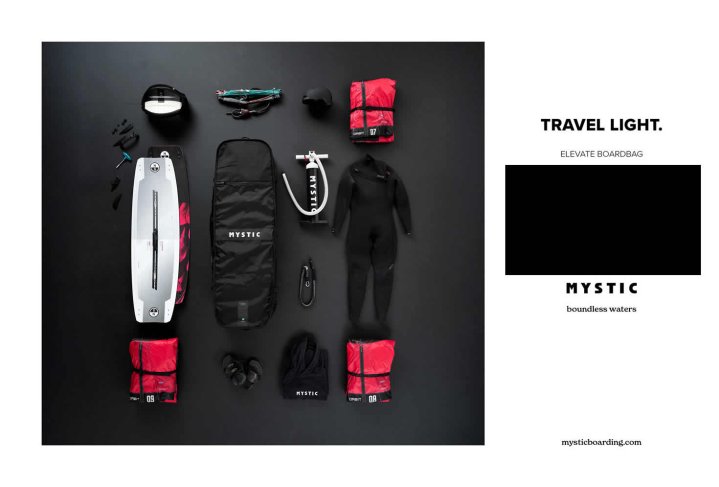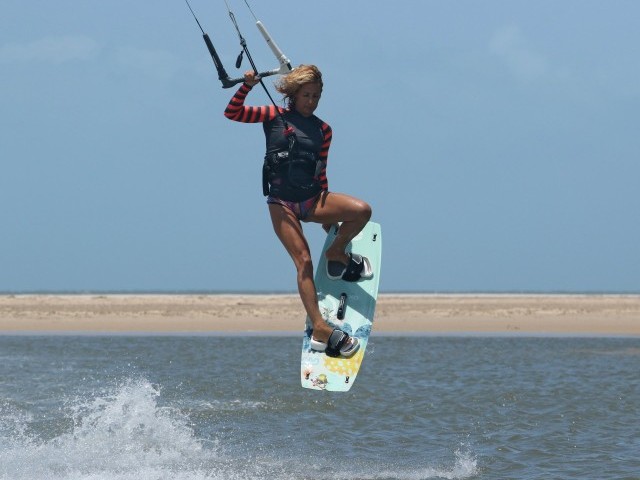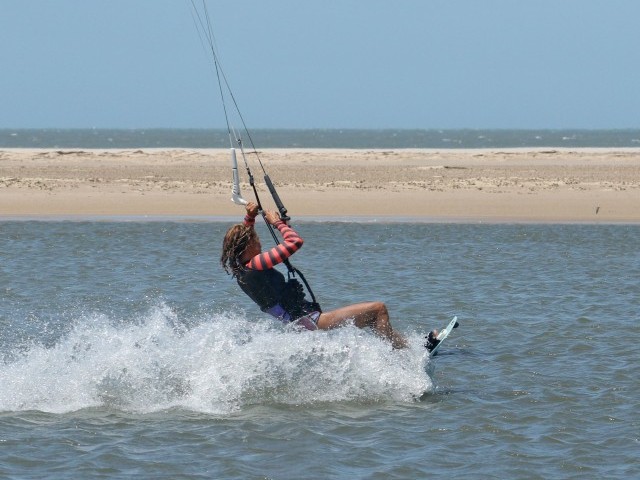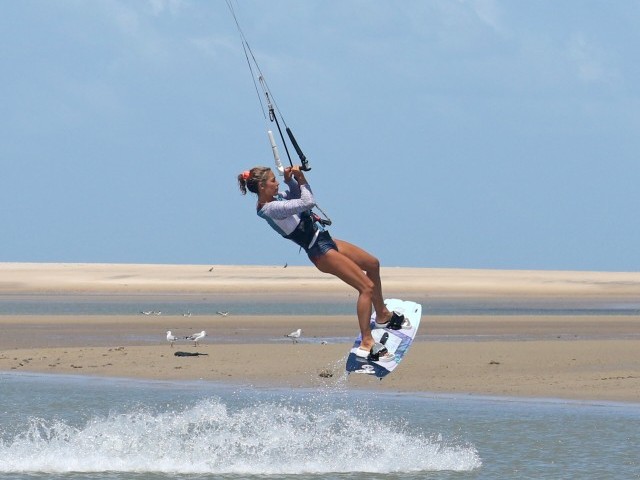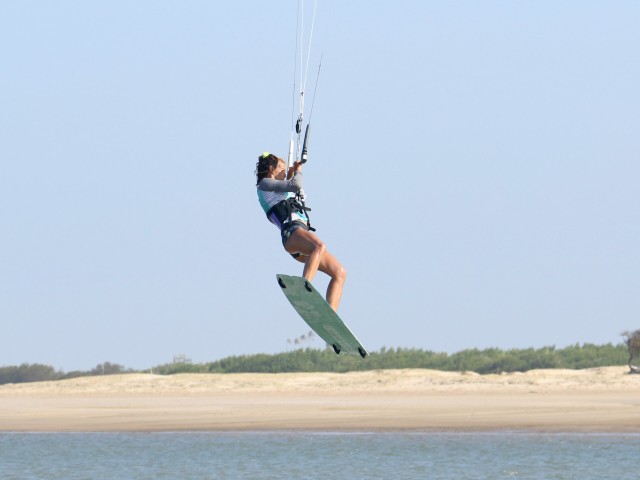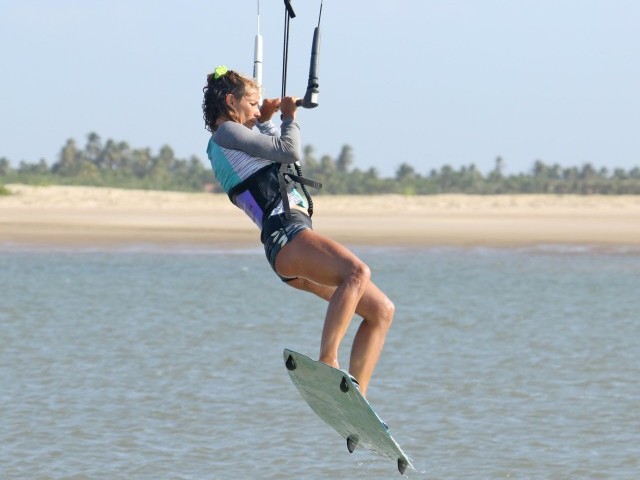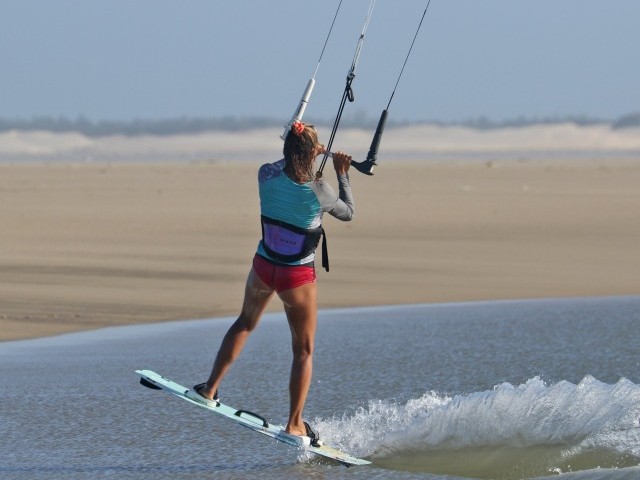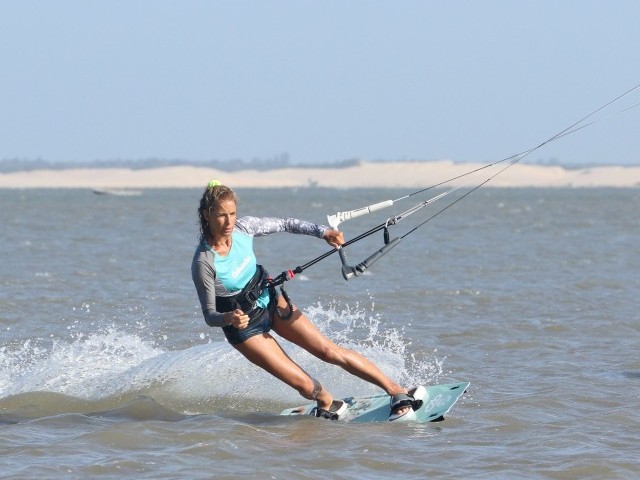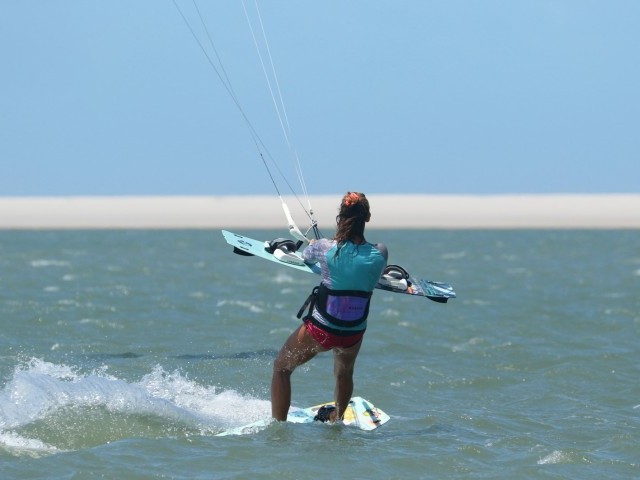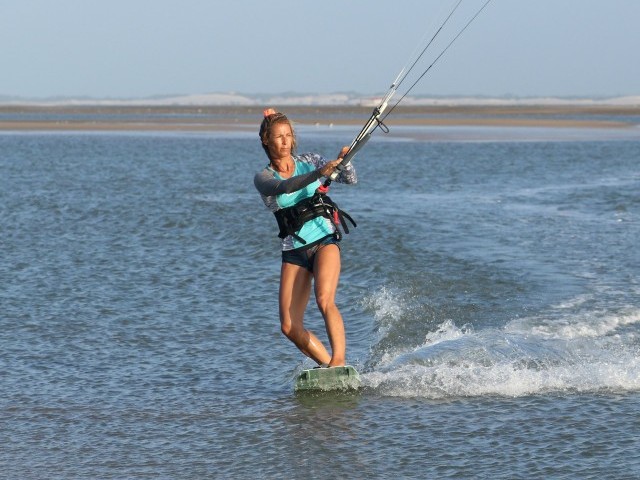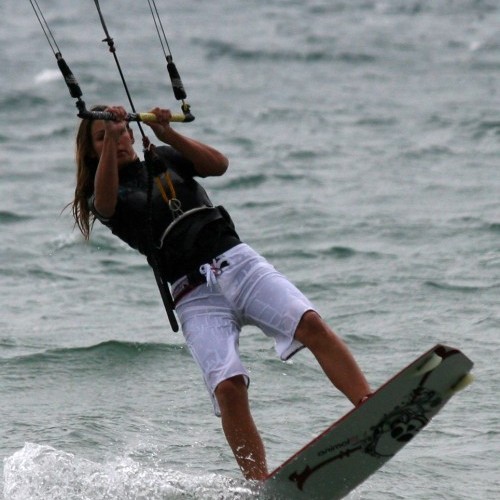
Back Loop
Technique / Beginner
Introduction
The backloop has often been the defining moment in many a riders kitesurfing history. The first genuine “trick” to really wow the masses and motivate ones belief to keep learning, keep tacking time off work and keep spending money. However it does not have to be the starting point. If you can already jump and have the front loop sorted, you could be getting the backloop nailed quicker than money out of a Northern Rock cash point.
Stating the Obvious
Understanding what a backloop is, will indeed quicken the learning process. Once again any notions of a languid teenage back flip, performed whilst vying for the attentions of that special girl/boy on the school trip to Cumbria should be ignored. Search further back, to idyllic summers swinging on ropes. In essence the spin of a basic backloop is a 360° rotation under the kite as can be seen in Video 1. With the kite flying above you, you’ll spin on a fairly vertical axis, suspended from the lines by your harness. However during a back loop you will rotate away from the direction of travel by turning upwind. Gene Kelly would have been a legend at back looping, for all his singin’ in the rain, running along and grabbing lampposts (assuming that the hand that grabbed it was his front hand), he stuck them every time.
To Jump or to Pop?
That is the question. There are two distinct types of backloop: jump and pop. We would heartily recommend learning the jump version first.
A jump backloop is much as you would expect, in that you will use the kite to lift you off the water, a la jump, whilst performing your backloop. This has two main advantages. Firstly with the kite pulling you up, off the water, you will have more time and height to complete the rotation. Secondly, you will be using a skill that you hopefully already have (jumping issue No. 3), so you can concentrate on the matter in hand – the back loop.
The pop backloop is a natural progression from the back loop, but does involve getting pop (see issue No. 4). Chances are if you can get good pop you’re probably already able to backloop and won’t be reading this. If you’re not popping confidently, or you don’t know what popping is, then you’ll be trying to learn two new skills at once, so let’s make it easier and do one at a time.
The Ingredients
So before you jump into it let’s gather together everything you’ll need to perform a back loop.
The jump. Jumping is all about sending the kite, resisting the pull, keeping the power on the board’s edge and timing. The common problem is that in an effort to load up power and lean back both knees are bent. This will result in an immediate loss of edge as the feet and therefore the board flatten. In turn this is likely to lead to the tiniest of jumps and very little rotation.
The backloop. If your starting point is riding gently upwind, and your goal is to land somewhere between down wind and across the wind, you don’t even need to rotate a full 360°. To start with lets imagine the backloop in two parts, on the water and in the air. On the water, you will initiate the backloop by turning as hard as you can into wind. The edge of your board will start the backwards circle. Your aim here is to turn as far into the wind as possible. In the air you will be nearly half way around the back loop, so with the lift of the kite, and some subtle use of body parts you should have time and inertia to come around and complete the rotation.
Four Steps to Heaven
Admittedly for your first back loop attempts you should not be aiming for the stratosphere, but remember that if you try and mellow your jump too much, nothing will happen. So without further ado lets get some order here and look at the four stages of a jumped back loop.
1. The approach
As per jump, your lead into a backloop attempt needs to be comfy. This translates into having enough power to feel that you can get off the water, having enough speed that you can edge hard without coming to a premature halt and having plenty of space around you (and water underneath you). Depending on which way you are riding you will need to get you trusty kite flying around 11 or 1 o’clock and then you are ready.
2. The Take Off
As with many a move the most critical part of the jump for the backloop is the take off. It is from here that the impetus for your backward rotation comes, so you have to make it count. The main difference from a normal jump will be a subtle change in your body position.
In Pic A you can see Karine just as she prepares to take off for a standard jump. She is edging as if her life depends on it, her front leg is extending to hold her edge as the back leg bends because she has moved her hips back over her back foot. She is also twisting around into wind, keeping her rear knee pointing back and front shoulder closer to the water. Her shoulders however are ever so slightly forward of her hips, in that they are nearer the nose of the board. So whilst she is moving her weight back to counter the pull her shoulders stay upright to keep her balanced.
Now if you look at Pic B Karine has got her legs and hips doing much the same even though she is setting up for a back loop. However if you look just a little further up you can see the difference. Her shoulders and upper body are leaning towards the back of the board, almost as a continuation of her extended front leg, which rocks the board right back onto its tail.
It is this leaning back which will enable you to almost pivot around on the back foot and get the rotation started. Think Rodney Mullen spinning around on his back wheels.
The other crucial part of the take off is your back leg. As you roll back and your front leg straightens, your back leg will bend. You will need to use this back leg as a coiled spring to blast you up off the water. Here timing is everything. As you feel the kite pull upwards, it’s time to back loop, or more precisely explode off the back foot, whilst lifting the front foot and pulling the front knee up towards your leading shoulder in true Evel Knievil wheelie fashion. This explosion is simply a very sudden straightening of the back leg, pushing your foot down hard onto the pad. With the body turning upwind, and leaning back it has the effect of creating a rotation and corking you up.
Yet again to compare the take off, in Pic C Karine is about to lift off for a standard jump. You can once again see how her shoulders are practically parallel with the water. In her take off for the back loop in Pic D you can clearly see how much further back she is leaning to get the pivoting rotation.
Other than creating rotation this pre-empting of the jump will get you into the air before the kite has the time to travel too far back, which in turn will make it easier to redirect the kite. If you don’t manage to blast off, the kite will not pull you off the water until it has gone a fair way back, somewhere into no mans land behind you, from where it’ll never come back no matter how hard you tug on the front hand.
So on take off as the body moves back over the back foot and beyond, the front leg must straighten to keep the board on its edge. With only the back leg bending you will be in a position to launch off it and off your edge, when the time is right.
3. In Flight entertainment
Ladies and Gentlemen your in flight entertainment starts as soon as you blast off the back leg. Your first aim is to get the kite flying back over your head, If not you’ll be in danger of the natural body freeze phenomena. Too often wannabe back loopers inadvertently end up starting unintentional kite loops. As you lean back it is easy to pull down on the back hand to send the kite, perfect. However as you take off in the aforementioned wheelie style, your body weight will almost certainly, with the help of gravity, try and push down onto your back arm. The easy fix for this is to pull down on your front hand as soon as you explode off the back foot – push with the foot, pull with the hand.
Secondly as you rise up and turn into the wind you’ll need to bring you knees up. This will give you balance, increase the speed at which you rotate and help pull the board up through the wind.
Thirdly it’s paramount to keep the rotation going. So rather than admire the view upwind turn your head to look over your leading shoulder in an attempt to spot the water and your eventual landing strip. Where the head goes the body will follow. As you come around your loop keep your focus on where you intend to land as this will also help to stop you rotating too far.
Try this standing on terra firma. Lift what will be your front knee, turn you shoulders, lean back and pull that bent leg “upwind”. You should pivot around your back foot, and in the process make Nureyev proud, see Pic E.
4. Landing
Landing a back loop should be no different from landing a jump. Once you feel that the water is approaching its time to dive the kite and drop your undercarriage. Diving the kite will help pull you out of the rotation into a downwind position, and also position the kite so that once you land it’ll be where you want it - with power, rather than flapping around at the edge of the window somewhere above you. Dropping you legs will make it easier to point the board downwind for a soft landing, slow your rotation and with you legs extended you will be able to absorb any impact by bending you knees when you actually touch down.
On the Water
Taking this onto Mother Nature’s finest let’s follow the sequence and video 1.
- Pic 1. Karine is riding on her edge and has the kite around 11 o’clock. She has had a good look around to check that the coast is clear and is ready to go for a back loop.
- Pic 2. As for a normal jump Karine has sent her kite back relatively hard, you can see how her bar is very positively steering the kite against the direction of travel. She has also dropped her weight to counter the upward pull of the kite as it rises.
- Pic 3. You can see her back knee, which is bending as she moves her hips back further over her back foot and drops her weight low. However her front leg has extended to keep the board on its edge as she carves harder upwind.
- Pic 4. As she feels the kite pulling up, Karine’s shoulders are now leaning towards the back of the board, encouraging the wheelie and enabling her to turn yet further into the wind creating the necessary backwards rotation.
- Pic 5. With the kite definitely giving some upwards pull Karine launches up by exploding off her back leg, forcing her foot down. At the same time she pulls the bar in and already pulls on the front hand to stop the kite going any further back.
- Pic 6. Just off the water you can see how Karine’s shoulders and hips are still turning due to the pivot nature of her take off. She’s pulling her front leg up which in turn will pull the nose of the board through the wind.
- Pic 7. With the nose of the board passing through the wind and the her knees coming up for balance you can clearly see how Karine is still directing the kite with her front (left) hand which keeps tension in the lines and stops her from penduluming under the kite.
- Pic 8. Now with her body facing into wind Karine needs to keep the momentum going. The smaller she makes herself the faster she will turn. Here she has some height so she does not need to crunch her knees right up.
- Pic 9. To keep the rotation going Karine looks over her front (left) shoulder – where the head looks the body will follow. Note: now is not the time to focus on something upwind as this will stop or slow your rotation.
- Pics 10, 11 & 12. Karine’s focus from now on in is her potential landing spot. This way she’ll rotate around but is unlikely to over rotate.
- Pic 13. Once Karine feels that touchdown is imminent its time for 2 things, drop the undercarriage and dive the kite with the front hand.
- Pic 14. The power from the kite as it dives helps to gently pull Karine downwind and also kills off any rotation.
- Pic 15. End result is a beautiful tail first landing, with the board pointing down wind towards the kite. Karine absorbs the landing with her knees, and all she will need to do is carve back onto an edge and prepare for her next one.
For those of you who like to see what the kite is doing have a look at video 2.
Top Tips
There is often a great temptation to throw oneself into a back loop using the head as a means of propulsion. This will result in an uncontrollable spin, and will only hinder further progression. This also encourages the sin of a bent legs take off. A controlled rotation leads wonderfully into transitions and the awe inspiring back loop kite loop.
It is sometimes suggested that, to better control the kite you should place your hands near the centre of the bar. However if you do send the kite too far back, with your hands centred, you will have no chance of beefing down on the front hand to rescue the situation. Ride with your hands where you feel right, or where the kite dictates. If you’re on a 16m you’ll need them apart, if you’re on an 8m you’ll need them centred.
If you do find it hard to pull with the front hand on take off, you could release your back hand, maybe even go for a cheeky grab, as this way there will be no confusion - back hand on board, front hand pulling on bar.
Once you feel height coming into your back loop, don’t be suckered into letting the bar slide out. Keep the bar in and enjoy the extra hang time.
This technique article was in Issue 6 of IKSURFMAG.
Related
By Christian and Karine
Christian and Karine have been working together as a coaching team, running improver to advanced kitesurfing clinics since 2003.







